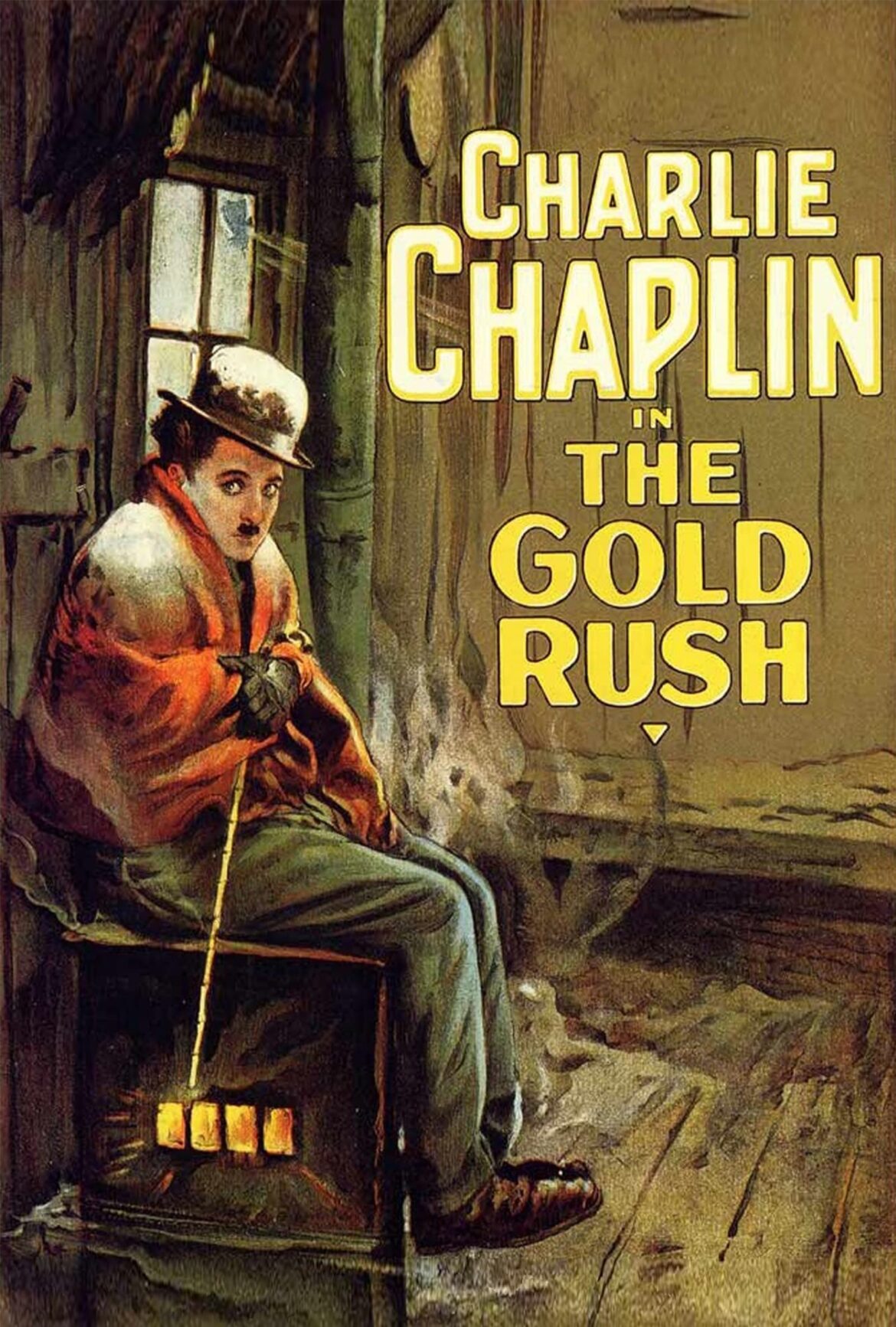The Gold Rush (1925) – Charlie Chaplin’s Timeless Tale of Comedy and Survival
Type: Movie
Country: United States
Genre: Comedy, Adventure, Drama
Release Date: June 26, 1925
Duration: 95 minutes
Director: Charlie Chaplin
Production Companies: United Artists
Cast: Charlie Chaplin, Georgia Hale, Mack Swain, Tom Murray, Henry Bergman, Malcolm Waite
Quick Review:
“The Gold Rush” (1925) is a silent film masterpiece directed by and starring Charlie Chaplin. This timeless classic seamlessly blends comedy, adventure, and drama, showcasing Chaplin’s unparalleled talent and creativity. Set against the backdrop of the Klondike Gold Rush, the film’s iconic scenes, memorable performances, and enduring themes continue to captivate audiences nearly a century after its release.
Plot Summary:
“The Gold Rush” follows the misadventures of Chaplin’s beloved character, the Little Tramp, as he ventures into the Klondike in search of fortune. The film opens with the Tramp embarking on a journey through the treacherous snow-covered mountains, driven by the hope of striking it rich. Amidst the harsh and unforgiving landscape, he encounters a series of humorous and perilous situations.
Struggling with hunger and cold, the Tramp finds temporary shelter in a cabin, where he meets Big Jim McKay (Mack Swain), a fellow prospector, and Black Larsen (Tom Murray), a fugitive. The trio’s interactions lead to some of the film’s most iconic moments, including the famous scene where the Tramp cooks and eats his own shoe.
As the story unfolds, the Tramp falls in love with Georgia (Georgia Hale), a kind-hearted dance hall girl. Despite his lack of wealth and status, he dreams of winning her heart. Through a series of comedic and touching events, the Tramp’s resilience and optimism shine through, culminating in a heartwarming and uplifting conclusion.
Characters and Performances:
- Charlie Chaplin as The Tramp: Chaplin’s portrayal of the Tramp is both humorous and poignant. His impeccable timing, expressive physical comedy, and ability to convey deep emotion without dialogue make his performance truly unforgettable. The Tramp’s enduring charm and relatability are central to the film’s appeal.
- Georgia Hale as Georgia: Hale delivers a graceful and endearing performance as the object of the Tramp’s affection. Her character’s warmth and compassion provide a perfect foil to the Tramp’s bumbling yet earnest nature.
- Mack Swain as Big Jim McKay: Swain’s portrayal of the gruff but ultimately good-hearted prospector adds depth and humor to the story. His dynamic with Chaplin creates some of the film’s most memorable comedic sequences.
- Tom Murray as Black Larsen: Murray’s menacing performance as the villainous fugitive contrasts sharply with the Tramp’s innocence, heightening the tension and drama of their encounters.
- Henry Bergman and Malcolm Waite: Both actors provide strong supporting performances, contributing to the film’s rich tapestry of characters and interactions.
Direction and Cinematography:
Charlie Chaplin’s direction in “The Gold Rush” is masterful, blending visual comedy with heartfelt storytelling. His innovative use of special effects, particularly in the cabin teetering on the edge of a cliff sequence, showcases his technical prowess and creativity. Chaplin’s meticulous attention to detail and his ability to elicit both laughter and empathy from his audience are evident throughout the film.
The cinematography by Roland Totheroh captures the stark beauty and harshness of the Klondike landscape. The use of wide shots to emphasize the vast, snowy wilderness juxtaposed with intimate close-ups of the Tramp’s expressive face creates a visually striking and emotionally resonant experience.
Music:
The film’s original score, composed by Chaplin himself, enhances the emotional and comedic elements of the story. The music underscores key moments, from the Tramp’s humorous antics to his moments of vulnerability and longing. The score’s lively and evocative melodies contribute to the film’s timeless charm.
Why It Endures:
“The Gold Rush” endures as a cinematic classic due to its universal themes, brilliant performances, and Chaplin’s visionary direction. The film’s exploration of human resilience, hope, and the quest for love and happiness resonates with audiences of all ages and backgrounds. Its iconic scenes, such as the dance of the dinner rolls and the cabin on the edge of the cliff, remain ingrained in popular culture.
Chaplin’s ability to combine humor with pathos creates a unique and enduring cinematic experience. “The Gold Rush” not only showcases Chaplin’s genius as a filmmaker and performer but also highlights the timeless appeal of the Little Tramp, a character who embodies the struggles and triumphs of the human spirit.
In Conclusion:
“The Gold Rush” (1925) is a landmark in film history, exemplifying Charlie Chaplin’s extraordinary talent and vision. This silent film classic blends comedy, adventure, and drama into a poignant and entertaining story set against the backdrop of the Klondike Gold Rush. Chaplin’s iconic performance as the Tramp, along with the film’s memorable scenes and enduring themes, ensures that “The Gold Rush” remains a beloved and influential masterpiece. It is a must-see for any film enthusiast, celebrating the enduring power of humor and humanity.


